


On August 1, 1876, President Ulysses S. Grant signed legislation admitting Colorado to the Union as the Centennial State (it was admitted 28 days after the 100th anniversary of the United States).
When Spanish explorers first visited the region that is now Colorado in the 1600s, they found several different Indian groups already inhabited it. The Arapaho, Cheyenne, Comanche, Kiowa, and Pawnee tribes lived on the vast plains and the Utes lived in the mountain valleys. Failing to find gold, the Spaniards left without attempting to colonize the area. In 1682, French explorer Robert Cavelier, Sieur de la Salle, claimed an area that included present-day eastern Colorado. In 1706, Juan de Ulibarri claimed the region for Spain.
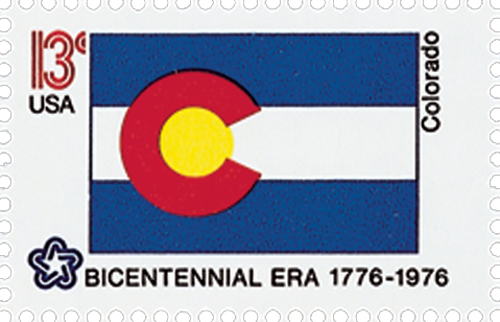
The United States acquired the region that is now eastern and central Colorado as part of the Louisiana Purchase, in 1803. Teams led by Zebulon M. Pike and Major Stephen H. Long explored the area. In 1833, the first permanent American settlement was established at Bent’s Fort, near present-day La Junta. The fort was used as a base for several famous frontiersmen of the time. In 1821, Mexico gained control of western Colorado from Spain. The region came under United States control twenty-seven years later, under the terms of the treaty that ended the Mexican-American War.
Colorado was sparsely populated until 1858, when prospectors found gold along Cherry Creek. Word spread quickly as gold hunters flocked to the area. By the following year, more than 100,000 people had come to Colorado in search of riches. However, more than half turned back, disappointed that they had not found much gold.
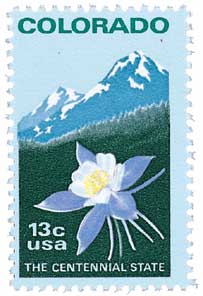
As the population grew in the Colorado area, government became an important issue. Settlers created the Jefferson Territory, ignoring Indian claims that they were given the land by various treaties. In 1861, Congress, which until that point had not recognized the Jefferson Territory, established the Colorado Territory with William Gilpin as the first governor.
The 1860s and 1870s were scarred by violent clashes between Colorado’s new settlers and the Indians native to the region. In 1864, nearly 300 Cheyenne Indians were killed by a group of Colorado militia. Critical of the attack, the U.S. government paid reparations to the Indians. Four years later, a group of Indians attacked a group of army scouts on the Arikaree River. The army scouts fought the Indians for several days, until they were rescued by additional troops.
Tensions between the Indians and whites finally came to an end in 1879, following the Meeker Massacre. During the massacre, a group of Ute Indians killed their reservation agent and ambushed a body of troops. In the aftermath, Ouray, a respected Ute chief, helped the Indians settle their differences with the white men once and for all.
In 1875, Congress passed an enabling act outlining the requirements for the Territory of Colorado to become a state. Colorado became the 38th state of the Union on August 1, 1876. John L. Routt, the former territorial governor, was elected as the first State Governor.
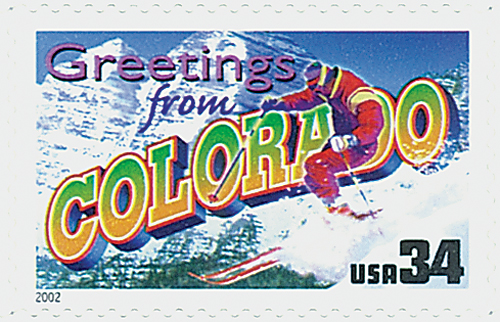
Shortly after Colorado gained statehood, a silver boom brought vast wealth to the area. Horace A.W. Tabor invested his profits from several silver mines in the frontier towns of Leadville and Denver. The magnificent buildings he financed helped Denver become one of the state’s largest business and financial centers.
In 1893, a nationwide economic slump caused the United States government to cancel its silver contracts with Colorado. As a result, silver prices dropped and several mines went out of business. The mine closings affected other businesses, as unemployed mine workers could not afford to buy many consumer goods.
Shortly after the silver crash of 1893, a major gold discovery was made at Cripple Creek. The resulting boom helped revive the state’s failing economy. The new prosperity allowed farmers the freedom to experiment with new crops and expand or improve their irrigation systems. Soon, Colorado had more irrigated land than any other state. Sugar beets and potatoes became Colorado’s most important cash crops. By 1910, almost 800,000 people lived in Colorado. Many of these people worked in the expanding food-processing industry.
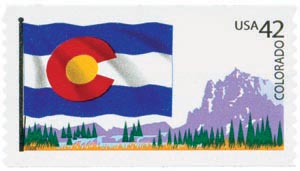
Another development that helped Colorado’s economy to prosper was the invention of the automobile. Colorado’s beautiful scenery made the state a favorite vacation destination. Also, the increased automobile use raised the demand for petroleum products. This increased demand led to the drilling of several oil wells in addition to one in the Arkansas Valley that had been drilled during territorial days. By 1920, oil was Colorado’s most important mineral product.
The Great Depression of the 1930s, coupled with a long dry spell on the eastern plains, had a dramatic effect on Colorado’s economy. Farm prices dropped, which in turn impacted the food processing industry. Programs were implemented to restore the land damaged by the drought and help the unemployed. A two percent sales tax was set in order to raise money for old age pensions, and highway construction programs were successful in getting the unemployed back to work.
World War II brought another economic boom to Colorado. A great demand arose for the oil and metals the state had to offer. Soon, there were several air bases in the state, several federal agencies in the Denver area, an army fort in Colorado Springs, and a large ordnance plant in Pueblo.
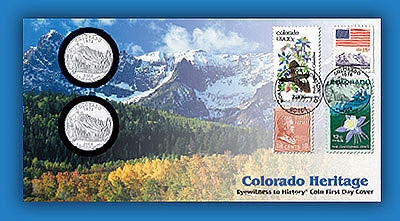
Colorado’s population and economy continued to grow following World War II. The state has ranked as one of the nation’s fastest-growing areas since 1945. More federal offices and military bases were established during the 1950s, including the Air Force worldwide financial center, an Air Force Academy campus, and the North American Aerospace Defense Command (NORAD) combat operations center. Manufacturing plants began producing atomic warheads, missiles, and other military items. By the mid 1950s, manufacturing had become Colorado’s leading industry.
With the growth in population, Colorado’s need for better water storage and irrigation increased. Completed in 1985, the Frying Pan-Arkansas Project transfers water from western Colorado to the arid plains of the east.
Today, Colorado’s economy continues to thrive. Although it is still noted for its high-technology industries and scientific research, much of Colorado’s current success has come from its ability to diversify its economy. Tourism is a major contributor, as are food processing and agriculture. Forestry makes up a smaller percentage of Colorado’s economy.